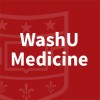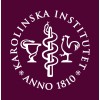
Biomechanical and Neurophysiological Evaluation of the Effect of a Motor Block and an Injection...
Cerebrovascular AccidentThe research "Biomechanical and neurophysiological evaluation of the effects of a motor block and an injection of botulinum toxin on the stiffness of the paretic sural triceps muscle" will study the response to passive stretching in the neurological patient presenting spastic paresis after a stroke.

Effect of Carbloading and Maltodextrin on the Level of Function in Patients With Apoplexia
Apoplexy; BrainThe study will investigate the potential effect of a supplement of maltodextrin and added dietary carbohydrates on the level of function in patients with apoplexia. The study has an intervention group and a control group. The study is randomized, but not blinded. The primary outcome is level of function measured with Barthel-100. Besides the primary outcome there are several secondary outcomes (see detailed description). All patients are recruited from Rigshospitalet, Glostrup.

Telehealth After Stroke Care: Integrated Multidisciplinary Access to Post-stroke Care
StrokeHealth Care Acceptability1 moreThe Telehealth After Stroke Care (TASC) trial is a pilot randomized controlled trial. It aims to evaluate the feasibility of a telehealth based model providing multidisciplinary access including nursing, pharmacy and physician care, and obtain preliminary evidence of efficacy of an integrated telehealth approach to blood pressure management after stroke.

Effect of Pressotherapy on Health Outcomes in Patients With Chronic Stroke
StrokeThis study intends to recruit stroke patients to either wearing a lower-limb compression (GMove) suit, daily, for 12 weeks, or to a normal therapy control group. Vascular, functional and quality of life outcomes will be collected before and after randomisation.

Peripheral Sensory Input in Central Post Stroke Pain (CPSP)
Central Post Stroke PainProspective, open-label study in 10 patients with Central Post Stroke Pain (CPSP). The study will evaluate the effects of peripheral nerve blockade on spontaneous pain and evoked thermal and mechanical responses in CPSP, and assesses the associated local anesthetic pharmacokinetics.

Bolus of Saline in Stroke
Ischemic StrokeThis study is a non-randomized, Phase 2 clinical trial designed to assess optical cerebral blood flow (CBF) response to bolus normal saline. Subjects will have had an ischemic stroke within 96 hours of enrollment. The study intervention will be a one hour monitoring session. There will be a 15 minute baseline measurement period, followed by intravenous administration of 500cc of 0.9% NaCl over 30 minutes, and finally 15 minutes of monitoring post-bolus. All study measurements will cease after 1 hour. Subjects will be followed during their hospitalization for 7 days or until discharge, whichever is sooner, to monitor for adverse events and to collect clinical information.

The Acute Effects of Passive Vibration on Cardiovascular Function in Individuals With Stroke
StrokeHemiparesis2 moreStroke is the third leading cause of death in the United States. Of those who are affected by stroke, a third becomes permanently disabled. Risk factors for stroke include, but are not limited to, advancing age, physical inactivity, arterial stiffness, and most commonly, high blood pressure. Stroke is a major form of a much boarder problem, cardiovascular disease (CVD). CVD is considered the primary cause of death in the US. Interestingly, increased arterial stiffness of elastic arteries (carotid and aorta) has been shown to be strongly correlated to CVD and stroke. Increased arterial stiffness is considered an independent risk for the development of CVD and stroke. Hence, arterial stiffness has been suggested as a potential therapeutic target for CVD and more specifically stroke. Recently, whole-body vibration (WBV) exercise has been proposed as a new and effective method to improve muscle mass and muscle strength in younger and older individuals. It is known that systemic arterial stiffness decreased 40 min after a single WBV session in healthy men. In our laboratory, we have shown that leg arterial stiffness decreases after a session of WBV. Taken together, this data seems to suggest WBV may be used as a viable way to decrease arterial stiffness. Special populations, such as post-stroke patients, may be unwilling or unable to perform WBV exercise so an inactive form of exercise (vibration) therapy is needed. Passive vibration (PV), allows patients to lie in an inactive, supine position, with their legs placed onto the vibration plate. This exposes the lower limbs to continuous vibration without performing voluntary muscle contraction. PV has been shown to increase skin blood flow on the vibrated extremity through vasodilation in healthy individuals and type 2 diabetics. Previous work in our laboratory has demonstrated that a 10-min session of PV on the legs decreases augmentation index (AIx) , a marker of pressure wave reflection, as well as leg and systemic PWV through decreases in local peripheral resistance in young men. However, the effects of PV on arterial function in post-stroke patients are unknown. It is hypothesized that post-stroke patients will demonstrate a decrease in leg PWV and central AIx. However, greater responses are expected with the lower vibration frequency.

Mechanisms of Neuromuscular Fatigue Post Stroke
StrokeWhile baseline weakness is clearly an important factor that contributes to disability post stroke, neuromuscular fatigue (the acute reduction in force production) of the paretic musculature likely compounds strength deficits and further exacerbates disability. The proposed study aims to improve our understanding of the mechanisms of neuromuscular fatigue in people post stroke in order to optimize strength training. In healthy individuals, both central (neural) and peripheral (muscle) factors are determinants of neuromuscular fatigue, but preliminary data from our laboratory suggests a greater contribution of central components to neuromuscular fatigue in the paretic musculature. Although cortical pathways are clearly disrupted post stroke, it is likely that brainstem pathways, known to have neuromodulatory effects on spinal motor circuitry, are more involved in the sustaining of force in the paretic leg, compared to the non-paretic and control legs. Therefore, the purpose of this proposal is to examine the role of descending neuromodulatory pathways of the brainstem in neuromuscular fatigue post stroke (Aim 1) and to correlate brainstem-related changes in neuromuscular fatigue to walking function (Aim 2). The investigators propose that stroke survivors' decreased capability to sustain force overtime results from the diminished ability of spinal motoneurons to respond to brainstem neuromodulatory inputs (serotonin (5-HT) and norepinephrine (NE)). Aim 1 will quantify stroke-related decreases in motor output sensitivity to a 5-HT and NE reuptake inhibitor (SNRI), serotonin antagonist, or placebo during sub-maximal intermittent fatiguing knee extension contractions. If motoneurons are desensitized to descending monoamines in chronic stroke patients, then they will be less sensitive to the effects of drugs that increase monoamine levels. The investigators predict that in response to the SNRI or serotonin antagonist, the paretic leg will show less change in time to task failure and a smaller reduction in strength as compared to the non-paretic and control legs. For Aim 2, the investigators predict that stroke subjects with the highest walking function will demonstrate the greatest fatigue-related changes in response to the SNRI. This proposal adopts an innovative model of motor impairment post stroke by including the role of subcortical structures in neuromuscular fatigue.

Brain Computer Interface (BCI) Technology for Stroke Hand Rehabilitation
StrokeThis study is carried out to find out if Brain Computer Interface (BCI) technology or BCI technology coupled with robotic technology using a Haptic Knob will benefit patients with arm paralysis after stroke. BCI uses EEG-based motor imagery to detect user's thinking abilities which control motor movement. Haptic Knob is a novel robotic device, which specifically trains the wrist and hand with intensive repetitions in a supported environment.

The Missing Link- Development and Feasibility Evaluation of Person-centred Transitions From the...
StrokeThe aim is to design, implement and evaluate new person-centred transitions between stroke units and the home. The development of person-centred transition will be performed together by people with stroke, significant others, stroke unit staff and interdisciplinary teams. Phase 1, a prospective observational study of current transitions from stroke units to rehabilitation in the home without coordination. The aim is to identify factors that are facilitators or barriers to transitions, patient and caregiver outcomes, use of health care during the first year after stroke. In phase 2, a co-design process of new person-centred transitions will be carried out by people with stroke, significant others, stroke unit staff and interdisciplinary home rehabilitation teams. In phase 3 new person-centred transitions will be implemented and evaluated in a feasibility study.
